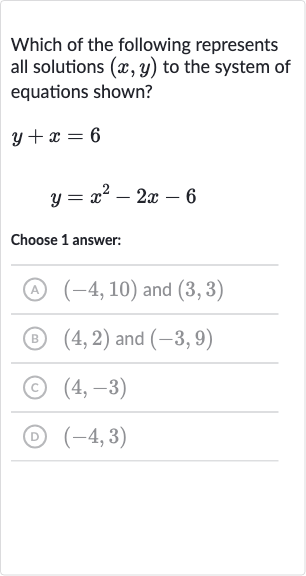AI tutor
Welcome to Bytelearn!
Let’s check out your problem:

Which of the following represents all solutions to the system of equations shown?Choose answer:(A) and (B) and (C) (D)
Full solution
Q. Which of the following represents all solutions to the system of equations shown?Choose answer:(A) and (B) and (C) (D)
- Write equations: Write down the system of equations to be solved.The system of equations is:
- Set equations equal: Since both equations equal , set them equal to each other to find the -values that satisfy both equations.
- Rearrange and solve: Rearrange the equation to set it to zero and solve for .
- Factor quadratic equation: Factor the quadratic equation to find the values of .
- Solve for x: Solve for x by setting each factor equal to zero. or or
- Find y-values: Plug the x-values back into the original equations to find the corresponding y-values.For :For :
- Write solution pairs: Write down the solution pairs for the system of equations.The solution pairs are and .
More problems from Domain and range of relations
QuestionGet tutor help
QuestionGet tutor help
